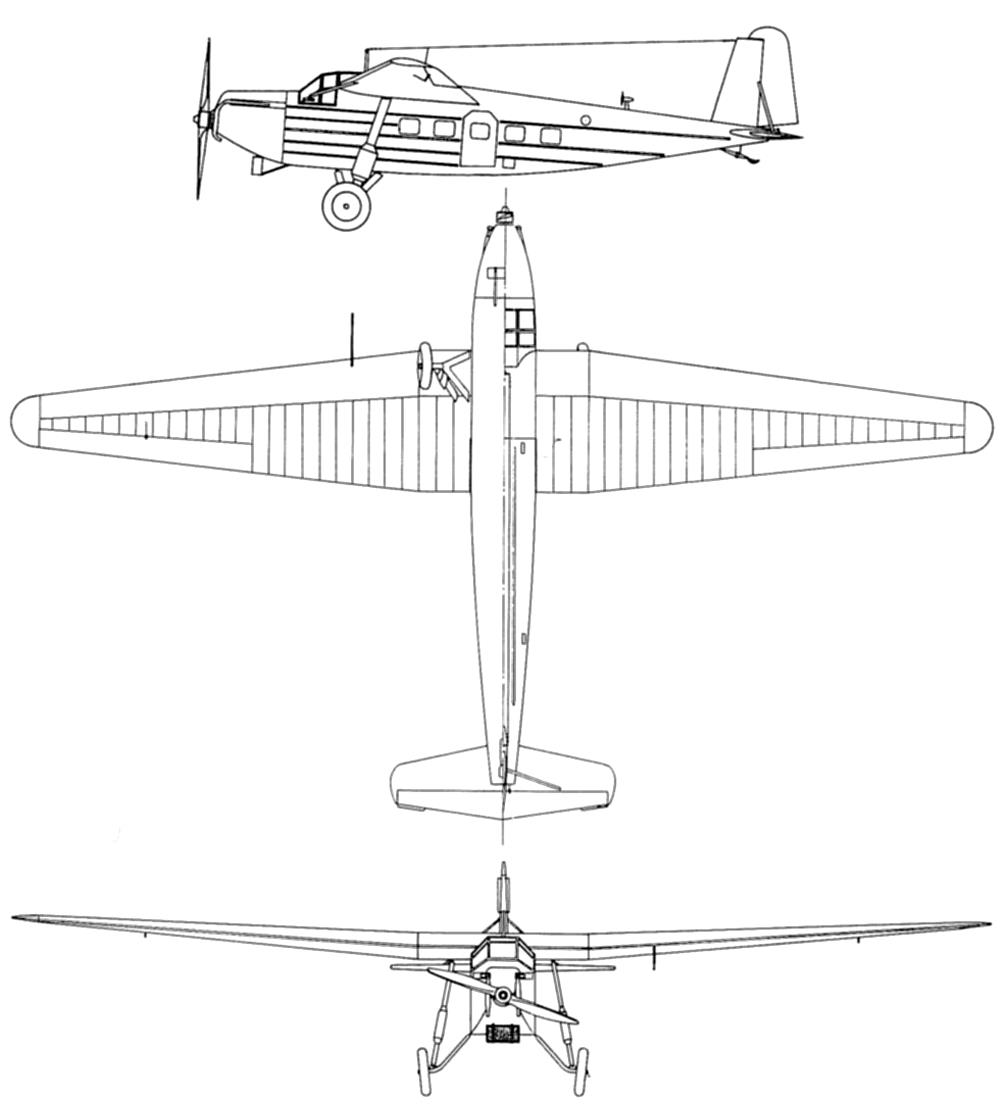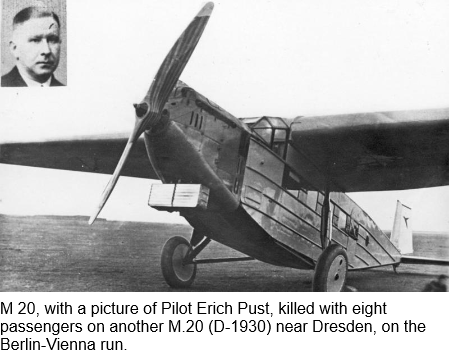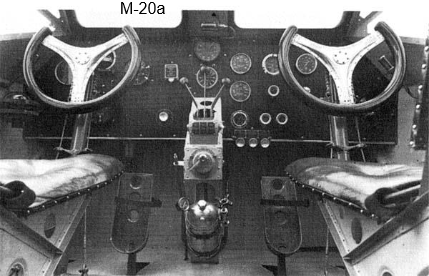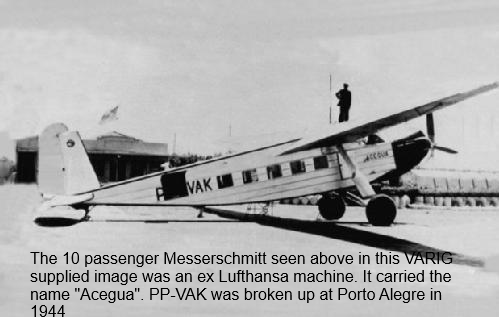| Type | a , 2 + 8-10 seat airliner | b , 2 + 8-10 seat airliner | b2 , 2 + 8-10 seat airliner |
| Engine | 1 BMW VIa | 1 BMW VIa | 1 BMW VIu |
| Dimensions | Length 14.75 m, height 4.80 m, span 25.5 m, wingarea 65.0 m2 | Length 15.90 m, height 4.80 m, span 25.5 m, wingarea 65.0 m2 | Length 15.90 m, height 4.80 m, span 25.5 m, wingarea 65.0 m2 |
| Weights | Empty 2200 kg, flying weight 4500 kg | Empty 2800 kg, flying weight 4600 kg | Empty 2800 kg, flying weight 4600 kg |
| Performance | Max. speed 175 km/h, cruising speed 154 km/h, landing speed 85 km/h, range 800 km, service ceiling 4000 m | Max. speed 205 km/h, cruising speed 165 km/h, landing speed 90 km/h, climb to 1000 m 5.5 min., range 1000 km, service ceiling 4000 m |
| Type | Werk.Nr | Registration | History |
| a | 371 | First flight 26/2 1928 ended with a fatal crash, pilot Hans Hackmack was killed. | |
| a | 392 | D-1480, D-UFON, D-OAQE * | First flight 3/8 1928. "Franken". In Aug. 1928 registered to BFW AG, from July 1929 to DLH AG. Original engine BMW VI, from July 1929 BMW VI Zu. Modified to a in April 1933 with BMW VIu engine. Sold to RLM in 1935, chartered by Hansa Flugdienst 1938. To the Luftwaffe 1939 and used as a trainer. Destroyed 1941. |
| a | 421 | D-1676, D-UDAL, D-OFYZ | "Schwaben".In June 1929 to DLH AG. Sold to RLM in 1935, chartered by Hansa Flugdienst 1938. To the Luftwaffe 1938 and used as a trainer. Destroyed 1943 |
| b | 442 | D-1928 | "Rheinpfalz". First flight 2/5 1929. To DLH AG in July 1930. Crashed 14/4 1931 at Reitschin. Two of the crew were killed , the 7 passengers and one of the crew members survived |
| b | 443 | D-1930 | "Lechfeld". To DVS GmbH in Sept. 1930. Crashed 6/10 1930 into hill while attempting to land at Dresden. Six passengers and 2 pilots were killed |
| b2 | 540 | D-2005, D-UNA | "Odenwald". In March 1931 to DLH AG. Crashed 27/4 1936 at Kiel |
| b2 | 541 | D-2006 | "Spessart". In March 1931 to DLH AG. Dismantled April 1932 |
| b2 | 542 | D-2025, D-UKUM | "Westerwald". In March 1931 to DLH AG. Chartered by Hansa Flugdienst 1938. To the Luftwaffe 1938 and used as a trainer. Destroyed 1942 |
| b2 | 543 | ||
| b2 | 544 | ||
| b2 | 545 | ||
| b2 | 546 | D-2341, D-UKIP | Harz". To DLH AG in Sept. 1932. Sold to VARIG, Brazil in 1937, used until 1948 |
| b2 | 547 | D-2349,D-UMOK,D-OFO | "Rhön". To DLH AG in Sept. 1932. Sold to RLM in 1936. Chartered by Hansa Flugdienst 1938. To the Luftwaffe 1939 and used as a trainer. Destroyed 1942 |
| b2 | 548 | D-2352, D-UJAR | "Eifel". To DLH AG in Oct. 1932. Chartered by Hansa Flugdienst 1938. To the Luftwaffe 1939 and used as a trainer. Crashed 1943 |
| b2 | 549 | D-2359, D-UHEN, D-OCIR | "Hunsrück". To DLH AG in Nov. 1932. Sold to RLM 1936. Chartered by Hansa Flugdienst 1938. To the Luftwaffe 1939 and used as a trainer. Destroyed 1941 |






